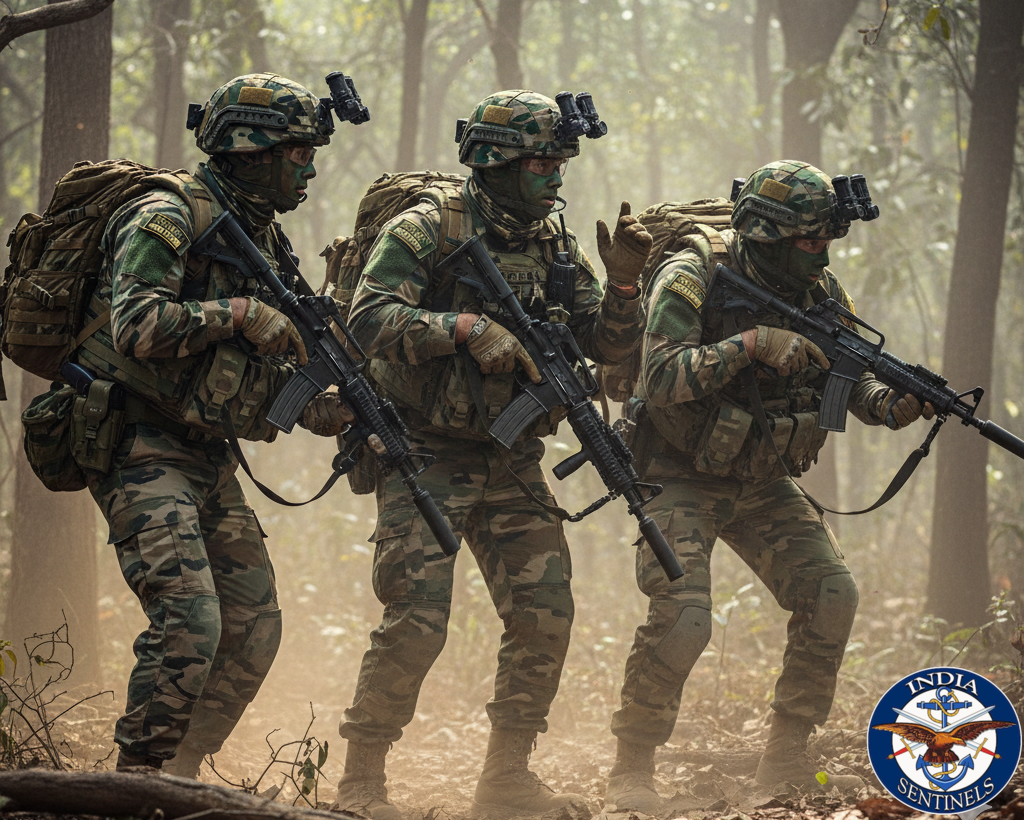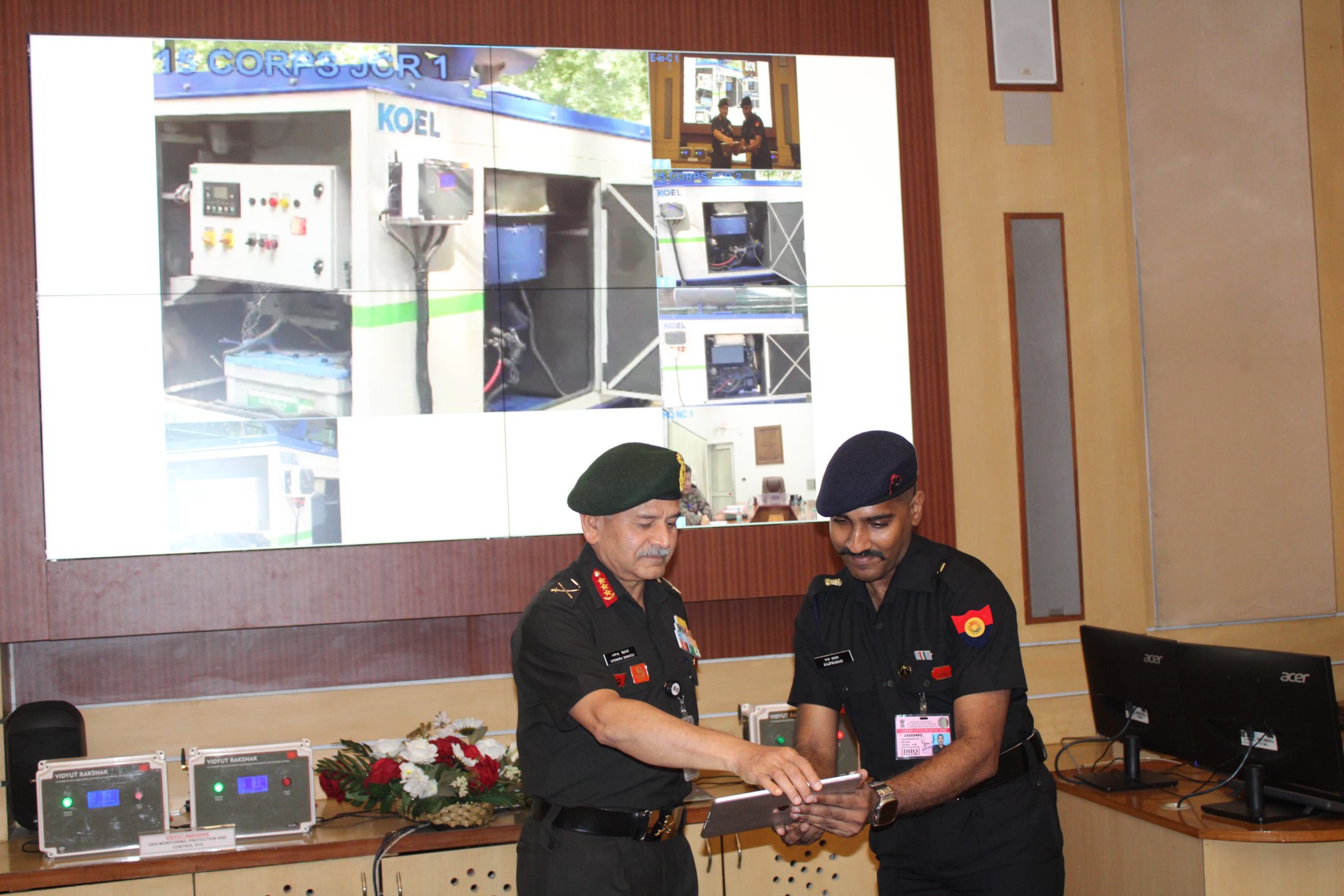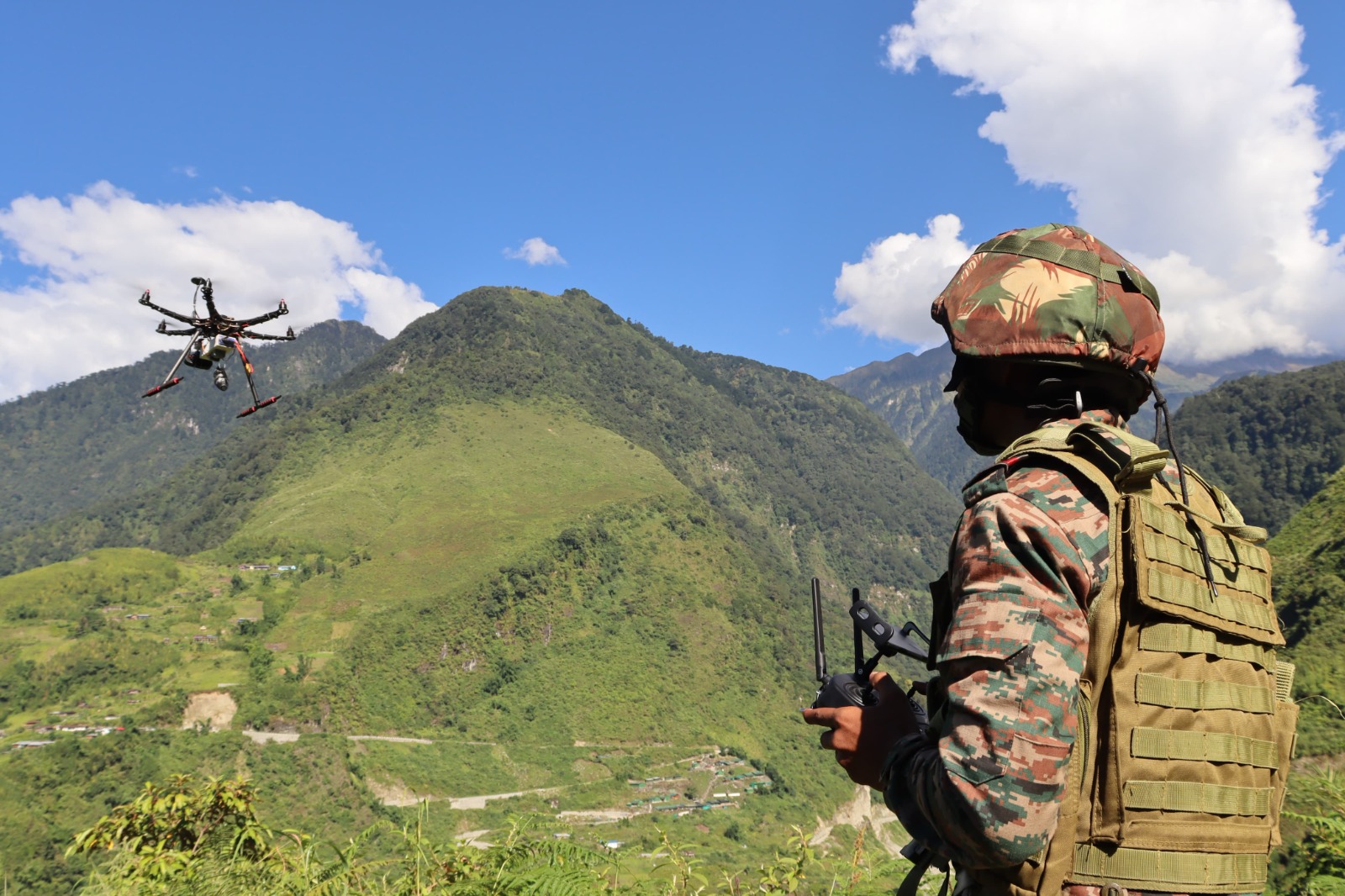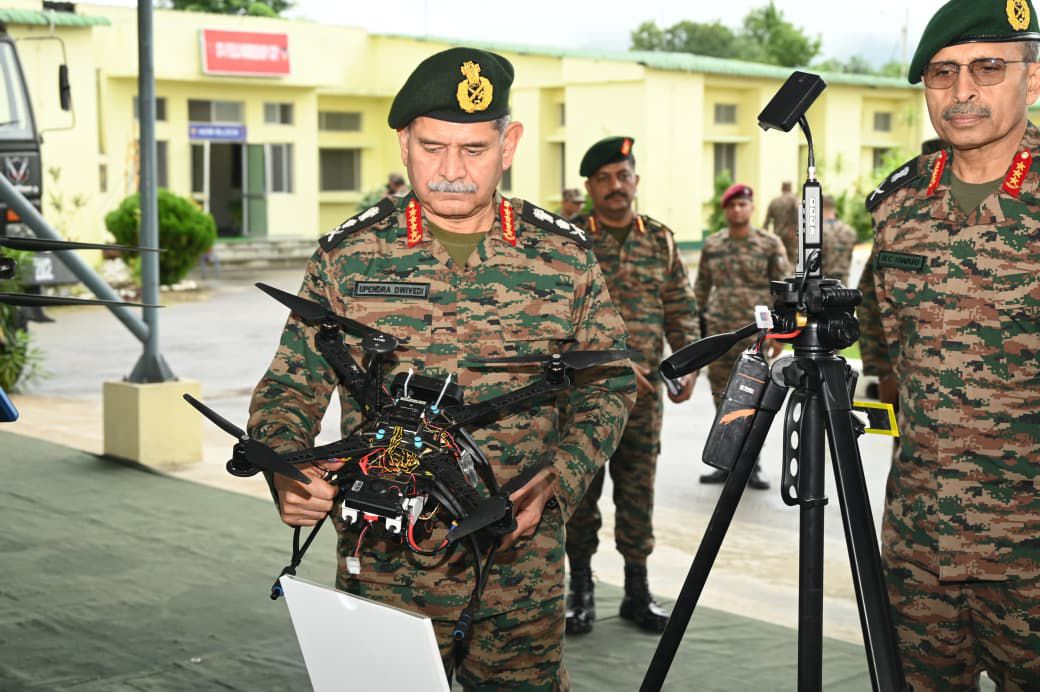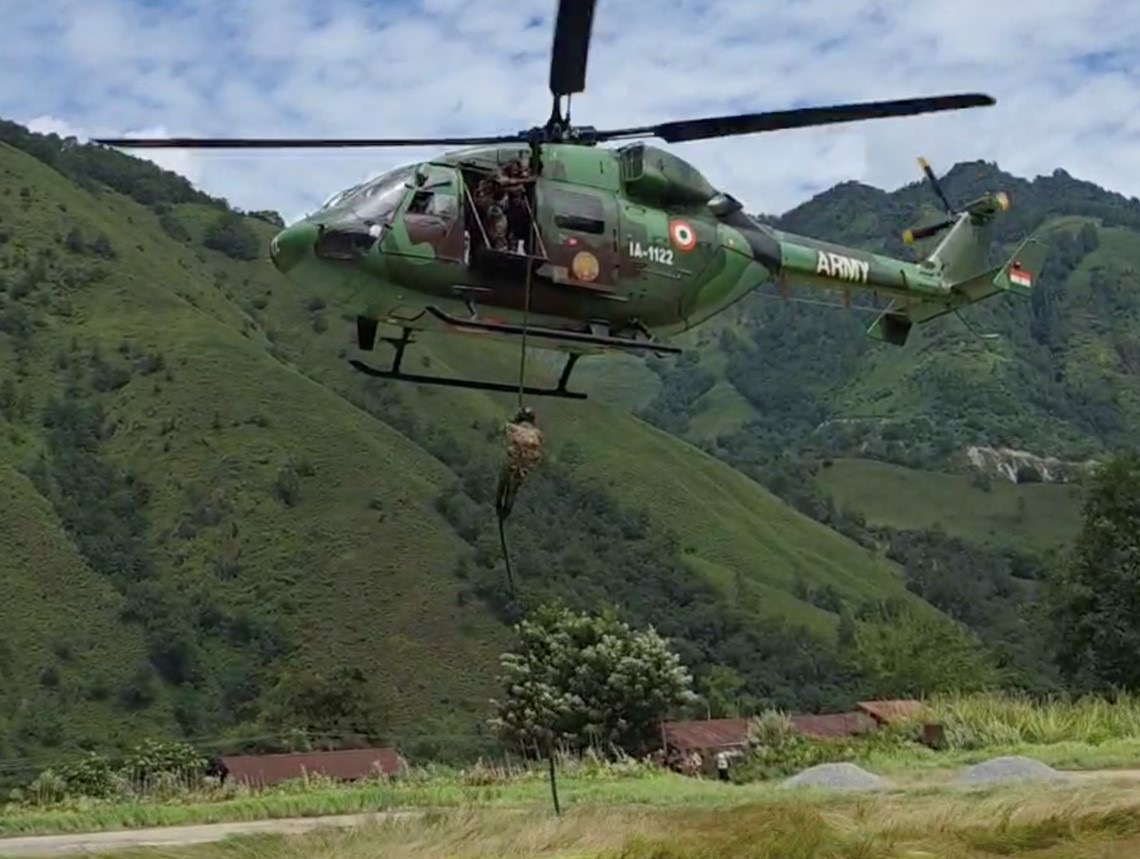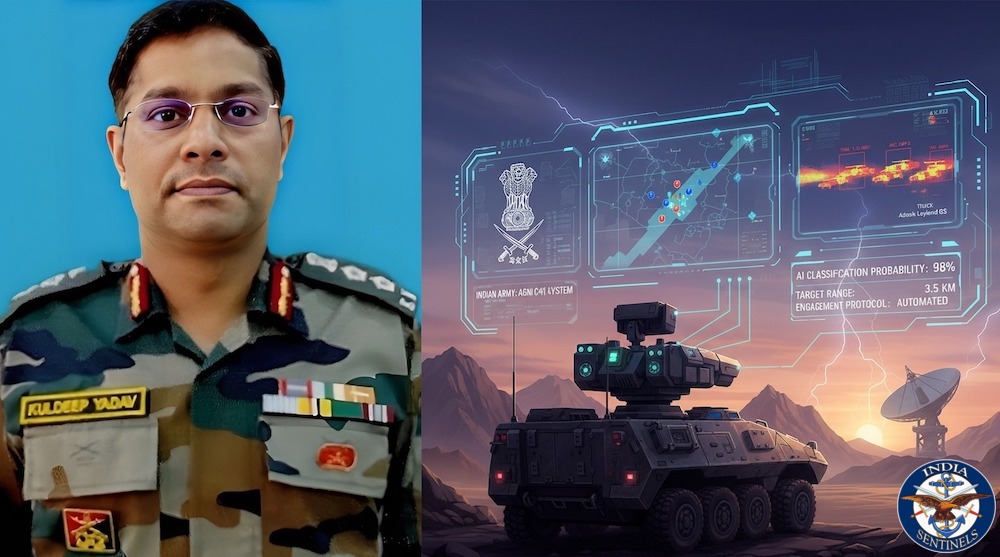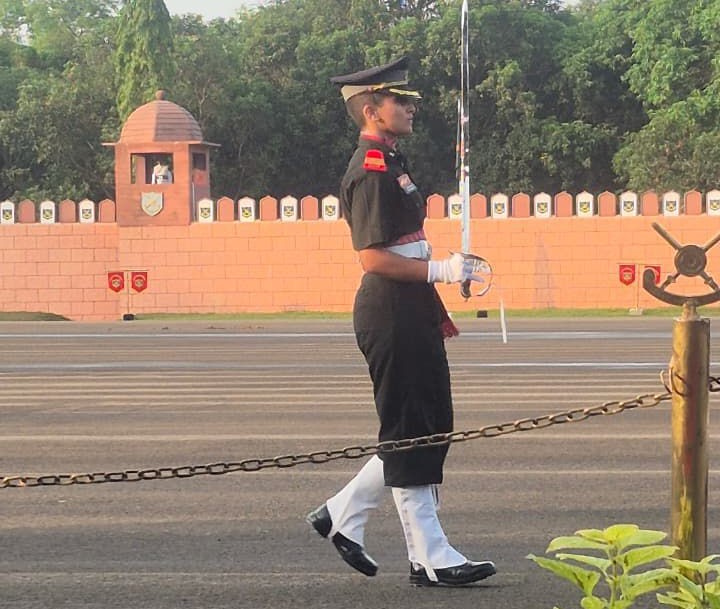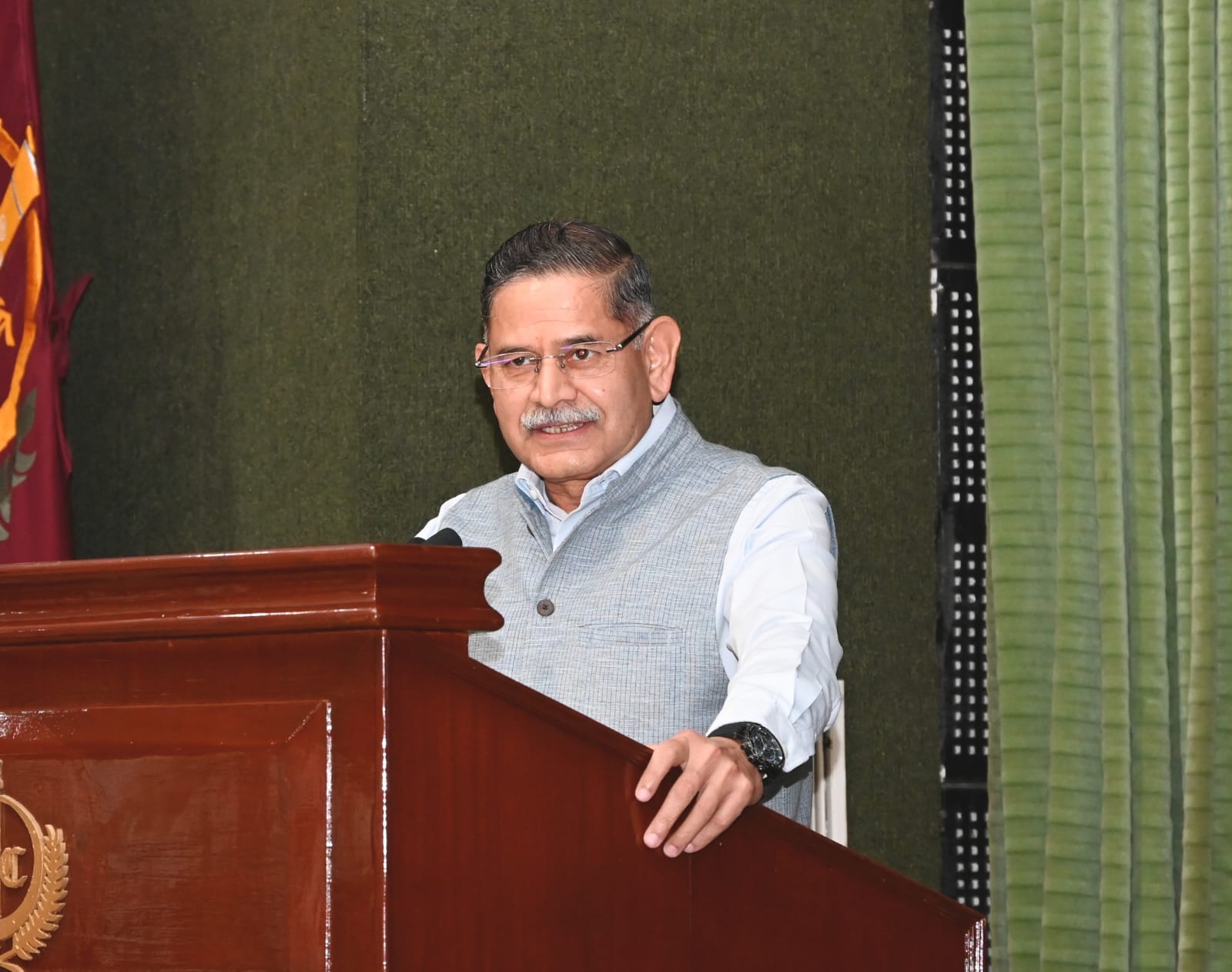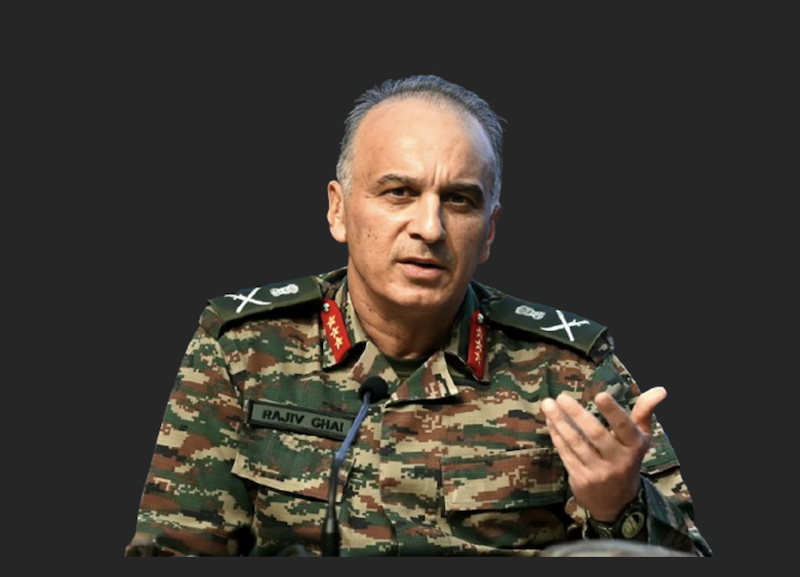 Lieutenant General Rajiv Ghai, DGMO, Indian Army.
Lieutenant General Rajiv Ghai, DGMO, Indian Army.
In the darkest hours before dawn on May 7, 2025, as the world slept, Lieutenant General Rajiv Ghai stood in the Indian military’s high-security command centre in New Delhi, his eyes fixed on tactical displays showing nine terrorist strongholds across the border. With a decisive nod, he gave the go-ahead to a kinetic action that would reshape the subcontinent’s security landscape. Within moments, precision strikes illuminated the night sky over Pakistan and Pakistan-occupied Kashmir, delivering India’s answer to terrorism with earth-shattering ferocity.
Operation Sindoor was underway.
From a normal officer in the Kumaon Regiment to the mastermind of India’s boldest cross-border operation in decades, Lt Gen Ghai has transformed into the architect of a new military doctrine that marries strategic restraint with overwhelming tactical supremacy. As the country’s director general of military operations (DGMO), he didn’t just execute a counterterrorism operation – he redefined India’s approach to national security, which demonstrated that in the shadows of asymmetric warfare, one commander’s vision can change the rules of engagement.
This is the story of the strategist who, when faced with the cold-blooded murder of 28 innocent civilians in Pahalgam, chose not blind retaliation, but calculated reckoning.
Mastermind of Operation Sindoor
On the intervening night of May 6 and 7, 2025, India launched Operation Sindoor, a carefully calibrated military action targeting nine terrorist camps across Pakistan and Pakistan-occupied Kashmir. The operation came in direct response to a brutal terror attack in Pahalgam on April 22. Lt Gen Rajiv Ghai, serving as the DGMO since October 2024, was the principal architect behind this decisive military response.
The operation’s planning phase, spearheaded by Lt Gen Ghai, involved meticulous intelligence gathering and strategic assessment of target locations. “We achieved total surprise and dismantled key terror infrastructure in Muridke and Bahawalpur, responding to the April 22 Pahalgam attack,” Lt Gen Ghai stated during the military briefing that followed the operation. Under his direction, the strikes successfully neutralized over 100 terrorists, including high-profile targets such as Yusuf Azhar, Abdul Malik Rauf, and Mudasir Ahmed.
What distinguished Operation Sindoor was its precision and strategic restraint. Lt Gen Ghai ensured the strikes were exclusively directed at terrorist infrastructure, minimizing collateral damage while maximizing operational effectiveness. The operation demonstrated India’s capability to execute targeted strikes with surgical precision, which reflected Lt Gen Ghai’s methodical approach to military planning.
In the aftermath of the strikes, the Indian DGMO attempted diplomatic outreach to explain the country’s position. “I reached out to my Pakistani counterpart to communicate our compulsions to strike at the heart of terror, but the request was turned down with an intimation: that a severe response was inevitable and in the offing,” he revealed during the military’s media briefing on May 11. This approach underscored his understanding that military operations exist within broader strategic and diplomatic frameworks.
Roots and Early Life
Lieutenant General Rajiv Ghai was born in Madhya Pradesh into a family with a rich military heritage. His father retired as a senior officer in the Madras Regiment and his family settled in Wellington, Tamil Nadu.
This family background laid the foundation for his future military career, instilling in him values of service and sacrifice from an early age. Despite beginning with an engineering background, Ghai’s career path took a different direction as he was inspired by family members to pursue a career in national service.
Growing up in a household that valued discipline and duty, Ghai developed a strong sense of patriotism and commitment to national security. These formative influences would later shape his approach to military leadership, particularly his emphasis on strategic thinking and operational precision.
Remembering him from his undergraduate years, his classmate and friend in Fergusson College, Pune, where he was a Geology student, Lieutenant Colonel Rajendra Bhaduri, a veteran Armoured Corps officer and an Army Aviation Corps pilot, told India Sentinels that Ghai was a “very lively guy with a penchant for mischief.”
His wife, Savita Ghai (nee Bijlani), was his college batchmate as well.
Col Bhaduri then recalled how Ghai filled his Combined Defence Services (CDS) form and later went together to Bombay to appear for the entrance exam.
Education and Military Training
Lt Gen Ghai’s formal military journey began at the prestigious Indian Military Academy in Dehradun, where he underwent rigorous training to become an officer in the Indian Army. His time at the academy was marked by exceptional performance in tactical exercises and leadership development programmes that set the stage for his future ascent through military ranks.
Following his training, Ghai was commissioned into the Kumaon Regiment in December 1989, joining one of the Indian Army’s most storied infantry regiments. The Kumaon Regiment, with its rich battle history dating back to British India, provided the young officer with a strong foundation in military tactics and regimental traditions.
Rising Through the Ranks
After commissioning, Lt Gen Ghai embarked on a military career characterized by steady progression and diverse operational experience. His initial assignments involved commanding units in various sectors, including the western front, where he developed expertise in conventional warfare strategies. These early postings helped hone his tactical skills and broaden his understanding of India’s security challenges.
Col Bhaduri remembers him as a “very service-minded officer” who became “extremely serious” about his career progression in the Army.
As he advanced in rank, Lt Ghai assumed greater responsibilities, commanding a battalion in the western sector and later leading a brigade and a division along India’s northern borders. Each promotion brought new challenges and opportunities to demonstrate his leadership abilities and strategic thinking. Throughout this period, he gained valuable experience in different terrains and operational environments, preparing him for higher command roles.
Counterinsurgency Expertise
One of the defining aspects of Ghai’s military career has been his extensive experience in counter-insurgency operations, particularly in Jammu & Kashmir. His expertise in this domain proved instrumental in shaping India’s approach to combating terrorism in the region. Before assuming the role of DGMO, Lt Gen Ghai served as the general officer commanding (GoC) of the Srinagar-headquartered XV Corps, also known as Chinar Corps – the formation responsible for military operations in Kashmir.
During his tenure with the XV Corps, Ghai implemented strategies that balanced security imperatives with civilian concerns, recognizing that effective counterinsurgency requires not just military force but also public trust and cooperation. His leadership in this sensitive region demonstrated his ability to navigate complex security challenges while maintaining operational effectiveness.
This experience provided Ghai with deep insights into terrorist networks operating in and around Kashmir, knowledge that would later prove invaluable in planning Operation Sindoor. His understanding of terrorist infrastructure and operational patterns allowed for the precision targeting that characterized the May 7 strikes.
Appointment as DGMO
In October 2024, Lt Gen Ghai was appointed the director general of military operations, which marked a significant milestone in his military career. As DGMO, he assumed responsibility for planning and overseeing all military operations, including combat missions and counterterrorism efforts. The position also made him a key figure in India’s military diplomacy, particularly in relation to Pakistan.
The role of DGMO carries immense strategic importance, as it involves maintaining direct communication with counterparts in neighbouring countries to manage potential conflicts and prevent escalation. Ghai’s appointment to this critical position reflected the high regard in which his strategic thinking and operational experience were held by the military leadership.
Leadership During Operation Sindoor
When the terror attack in Pahalgam claimed 28 lives on April 22, the government faced intense pressure to respond decisively. As DGMO, Lieutenant General Ghai was tasked with developing and implementing the military response. The result was Operation Sindoor, a series of precision strikes against nine terrorist camps in Pakistan and Pakistan-occupied Kashmir on May 7.
The operation’s planning phase reflected Lt Gen Ghai’s methodical approach to military strategy. Intelligence assets were deployed to identify and verify target locations, ensuring that the strikes would achieve maximum impact on terrorist infrastructure while avoiding civilian casualties. Under his direction, the operation targeted key terrorist facilities in Muridke and Bahawalpur, areas known to house training camps and command centres.
On May 11, Lt Ghai represented the Indian Army at a media briefing on Operation Sindoor, where he provided details about the strikes and their aftermath. “Have we achieved our objectives of decimating the terrorist camps? The answer is a resounding yes, and the results are visible to the entire world,” stated Air Marshal Awadhesh Kumar Bharti, director general of air operations, during the same briefing, underscoring the operation’s success.
The military action resulted in significant casualties among terrorist ranks, with over 100 terrorists neutralized, including high-value targets that had long been on India’s radar. Additionally, the Army reported the deaths of 35–40 Pakistani military personnel along the line of control (LoC) between May 7 and May 10, described as “a direct outcome of India’s retaliatory strikes on military assets.”
Managing Escalation and Ceasefire
Perhaps the most challenging aspect of Lt Gen Ghai’s leadership came in the aftermath of Operation Sindoor, as tensions between India and Pakistan threatened to escalate into broader conflict. Pakistan’s response to the Indian strikes included attacks on military and civilian targets, resulting in 16 Indian civilian casualties and damage to religious structures. Four key Indian Air Force stations – Udhampur, Pathankot, Adampur, and Bhuj – suffered limited damage from Pakistani attacks.
In response, under strategic direction that Lt Ghai would have been instrumental in formulating, the Indian armed forces launched precision strikes on six Pakistani airbases: Rafiqui, Murid, Chaklala, Rahim Yar Khan, Sukkur, and Chunia. These strikes targeted military infrastructure while minimizing collateral damage.
As DGMO, Ghai played a crucial role in managing the escalation ladder, ensuring that India’s response was proportionate and focused on legitimate military targets. His experience in diplomatic communication proved valuable as efforts were made to establish channels for de-escalation despite the heightened tensions.
On May 12, DGMO-level talks were held between India and Pakistan. During these discussions, issues related to maintaining the ceasefire and avoiding aggressive actions were addressed. Both sides considered immediate measures to ensure troop reduction from borders and forward areas. Lt Gen Ghai’s participation in these talks demonstrated his ability to transition from operational commander to diplomatic interlocutor – a key quality for modern military leadership.
Awards and Recognition
Throughout his distinguished military career spanning over three decades, Lt Gen Ghai has received numerous accolades for his service to the nation. His decorations include the prestigious Uttam Yudh Seva Medal (UYSM), Ati Vishisht Seva Medal (AVSM), and Sena Medal (SM). These honours recognize his exceptional leadership, operational success, and contributions to national security.
The Uttam Yudh Seva Medal, in particular, is awarded for distinguished service of an exceptional order during war, conflict, or hostilities. The Ati Vishisht Seva Medal acknowledges distinguished service of an exceptional order, while the Sena Medal recognizes gallantry or distinguished service. Together, these decorations reflect the breadth and depth of Ghai’s military accomplishments.
Legacy and Leadership Philosophy
Lt Gen Rajiv Ghai’s leadership style combines strategic vision with tactical precision. Throughout his career, he has demonstrated an ability to balance military imperatives with broader strategic objectives, recognizing that force must be applied within a comprehensive framework that includes diplomatic, political, and humanitarian considerations.
His handling of Operation Sindoor exemplifies this approach. While the operation delivered a decisive blow to terrorist infrastructure, it was executed with restraint and precision, targeting only legitimate military objectives. Similarly, his subsequent efforts to engage with Pakistani counterparts reflected an understanding that military action alone cannot resolve the complex security challenges facing the region.
As Lt Gen Ghai continues in his role as DGMO, his leadership will remain crucial in navigating India’s security landscape, particularly the delicate relationship with Pakistan. His experience, strategic acumen, and diplomatic skills position him as a key figure in shaping India’s military strategy and defence policy in the years ahead.
Lt Gen Rajiv Ghai’s journey from a young officer in the Kumaon Regiment to assuming the role of the country’s DGMO illustrates the qualities that define exceptional military leadership – strategic vision, operational expertise, and diplomatic skill. His role in planning and executing Operation Sindoor demonstrated these qualities on the national stage, establishing him as one of India’s most consequential military commanders.
As India continues to face complex security challenges both conventional and asymmetric, leaders like Lieutenant General Rajiv Ghai will play a key role in developing and implementing responses that protect national interests while contributing to regional stability. His career serves as a testament to the professionalism and strategic capability of India’s military leadership, qualities that will remain essential as the country navigates an increasingly complex security environment.



